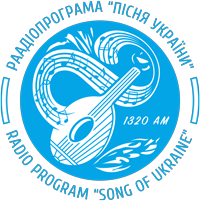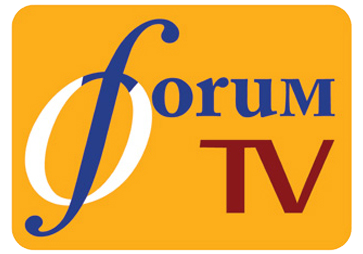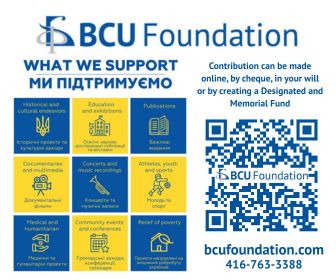Union of Ukrainian Youth
Continued from issue 15
A different story happened to Pavlushkov, who studied at the veterinary institute. “One of his comrades, having noticed that he was wearing a cross, reported him. An investigation is underway. They may expel him (now they say “cleanse”) from the institute for the cross…”, – wrote Sergey Yefremov in his diary for October 3, 1924.
A few days later, a new entry appeared in the diary: “And Nikolai was indeed “cleansed” from the institute for the cross – officially for taking a small part in the life of the school. First, he was expelled for politics, now for non-politics. But the essence is the same, only the cynicism is a hundred times greater.”
To get reinstated, Mykola passed a commission in Kharkiv and continued his studies at the history department of the Institute of Public Education (INO). Here he was helped by a school teacher, and now the vice-rector of the INSO, Yosyp Germaize. Matushevsky also reinstated at the same institute.
But if the “purge” could affect anyone, the guys felt in danger because of the TEZ. Two incidents forced them to be more careful and stop gatherings altogether. First, at the Institute, their friend Vita Mazurenko was expelled from the illegal TEZ. And soon Natalka Sobko, who had moved to Kharkiv, sent a letter to her friends, accusing them and director Durdukovsky of taking retrograde positions… This letter showed that Soviet reality and propaganda influenced even those closest to her. The TEZ gradually declined and ceased its activities.
The fact that legal groups were already feeling stifled within the labor school is evidenced by Yefermov’s note from February 13, 1925: “Volodymyr (Durdukovsky) returned from school as if he had been taken down from the cross: exhausted, nervous. The Komsomol members elected Komsomol members to the school committee with the slogan – down with the bourgeois! And the bourgeois are the children of teachers, professors, doctors… Obviously, the school will fail. The old school at least fostered a sense of community, but the current one has neglected and trampled even that. Unhappy children, an unhappy generation! It will pay dearly for the experiments that are now being conducted on them…”.
CYM
In 1925, there was unrest due to constant talk of the coming war. Not only were possible events discussed on the street, but an order was also sent through the official line to develop a plan for the evacuation of cultural and scientific institutions.
The more active guys who knew each other from school and the TEZ, namely Mykola Pavlushkov, Borys Matushevskyi and Diodor Bobyr, decided to create an underground group. They would call it the “Union of Ukrainian Youth” (SUM). Later, the documents would contain a version that even then, in the spring of 1925, they were choosing between two names: the Union of the Liberation of Ukraine (SVU) or CYM. But they settled on the latter. According to Pavlushkov, it was Yefremov who pushed him to the idea of an underground organization. He said in conversations that he was often surprised that the youth, in particular the student body, did not have political circles. However, his personal experience under the tsarist regime was different.
The guys gathered several times and discussed the structure and program of the Union. They agreed on a “five-man” system, when each member of the central bureau formed his own fives. They also explored the possibility of purchasing a “Montecristo” type pistol and a glass printer to print and reproduce materials. And although this did not work out, that same year Pavlushkov got a typewriter. The guys expanded their circle, and Danylo Kokot (an acquaintance of Matushevsky from Boyarka) took up organizing rural youth. Diodor Bobyr suggested making a seal, but he was refused this idea.
The CYM declared itself in May 1926. Symon Petliura died in Paris and the young men decided to publicize it. On the evening of May 30, a memorial service was held in St. Sophia Cathedral in honor of the 10th anniversary of the death of Ivan Franko. Mykola printed about 100 leaflets, 5 x 15 cm in size, with the words: “People, Ukrainians! The innocent blood of the best son of Ukraine has been shed again. How long will you tolerate it? Come to your senses, be people…” Nine people took part in the action. At the end of the service, Pavlushkov, Matushevsky and Bobyr threw leaflets from the choirs into the crowd. Other Sumiv members created a crowd so that their friends could leave the cathedral peacefully.
“They say that yesterday in Sofia, at the memorial service in Frankov, proclamations were scattered about the assassination attempt on Petliura,” Serhiy Yefremov wrote in his diary for May 31.
But that incident showed that even a narrow group does not guarantee conspiracy. On the way to the Cathedral, the guys met another comrade – Fedor Durdukivsky (probably the nephew of the director of the labor school). He sharply and angrily condemned the action. And although he himself, because of his “priestly lineage”, became a victim of the “purge”, he still justified the communists.
The incident in Sofia, it seems, did not come into the field of view of the GPU, or perhaps there were many similar cases, because Yefremov regularly recorded the facts of public unrest. And in those days, the academician himself gathered a small group to commemorate Petliura in a small circle. As he wrote in his diary: “One Cossack out of a million swineherds”.
The guys scattered several dozen more leaflets along the corridors of the INO. They not only reprinted various materials, but also composed poetry themselves. In particular, poems dedicated to Petliura were written by Matushevsky and Pavlushkov. The latter’s poem will later be found in Yefremov’s diary:
…I say that the people who
are asleep will wake up
The Word will speak – and in the thunder
it will roar –
A powerful prelude to the new day…
Through the fields of the wild
they will spread with singing,
The Valkyries, descending with grain –
the machine gun,
Drenched in blood, exalted by anger,
The eternal glow of the clear Marseillaise…
In the summer, together with his institute friends, Pavlushkov traveled through the Caucasus. And the new academic year began with a conflict with his classmates – they boycotted the teacher, and Mykola supported him.
Nevertheless, the Ukrainian circle still existed. The guys collected and reprinted materials about Petliura – they wanted to publish a collection. In particular, they took articles from the Literary and Scientific Bulletin, which was published in Lviv. And on the 16th, Dontsov’s article about Petliura, reprinted by Palushkov, caused a heated debate at a gathering at the Chekhovskys’. Another time, Matushevsky recalled how, celebrating the new year of 1927, he and Mykola raised a toast “For an independent Ukraine!”. It was a provocative joke in the company of acquaintances, but it showed that there were still student circles where it was possible to joke on such topics.
In the summer of 1927, Matushevsky, with his friend Mykola Levitsky, traveled to the Far East. At the same time, Pavlushkov was resting in Dzvinkova (now the village of Dzvinkove, Boyarsky community), on the Irpin River, at Yefremov’s dacha. Among the books read, which Mykola took from Yefremov, was Dontsov’s “Nationalism”. Yefremov himself recalled that he could not cope and put the book aside. The academician did not like Dontsov and stated this more than once… Mykola spent the following summer, 1928, in Dzvinkova. In particular, he talked a lot with Efremov and heard from him the opinion that it was too dangerous to create illegal organizations at the present time. One should simply form a circle of like-minded people and support them.
But 1928 turned out to be a difficult year. In a note dated April 2, 1928, Yefremov noted: “Volodymyr (Durdukovsky) and another teacher were summoned to the GPU. They didn’t stand on ceremony with Volodymyr and only tortured him with endlessly long and endless stupid conversations, and they simply attacked the poor fellow to make him their spy. When he refused, they threatened him with arrest and a revolver; they shouted, knocked, and cursed. The GPU is showing more and more intense activity, especially in persuading secret agents.”
That same April, Yefremov was brought one of the anti-Soviet proclamations that were scattered around Kyiv’s universities. “I noticed. But it is characteristic that even among the modern student body, among the thick sieve of the disillusioned, intimidated, and dulled, there are Protestants. The stones are crying out,” he wrote in his diary.










